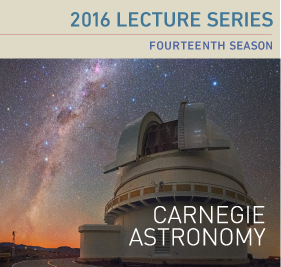Update: 17 March 2016
The seminar series including music performances will be webcast live this year. Details will be provided in the next few days |

Image courtesy of the Carnegie Observatories
The Carnegie Observatories of Pasadena have announced their 2016 Lecture series, beginning in early April 2016 at the Huntington Library in San Marino. There will be four talks by learn’d astronomers on the Las Campanas observatories, Planet formation, Exoplanets, and the lifecycle of Galaxies. Each will be preceded by music performances by students from the Colburn School. The talks are free but reservations are required. Doors open at 6:45pm, talks begin at 7:30pm.
Visit the Observatories’s Youtube Channel for rigorous yet accessible talks from previous years. The only downside is that the events are on Monday nights, a hell of a schlep for those of us in the South Bay.
Carnegie Spring Lectures at the Huntington Library
1151 Oxford Road, San Marino
All Lectures are in Rothenberg Auditorium.
Monday, April 4th 2016
Las Campanas Observatory: A Southern Window on the Universe
Dr. Mark Phillips
Director, Las Campanas Observatory, Associate Director for Magellan
Carnegie Institution for Science
Monday, April 18th 2016
A Short History of Planet Formation
Dr. Anat Shahar
Staff Scientist, Geophysical Laboratory
Carnegie Institution for Science
Monday, May 2nd 2016
Exoplanets
Dr. Kevin Schlaufman
Assistant Professor of Physics and Astronomy, Johns Hopkins University
Carnegie-Princeton Fellow
Carnegie Observatories & Princeton University
Monday, May 16th 2016
The Secret Lives of Galaxies
Dr. Katherine Alatalo
Hubble Fellow,
Carnegie Observatories



